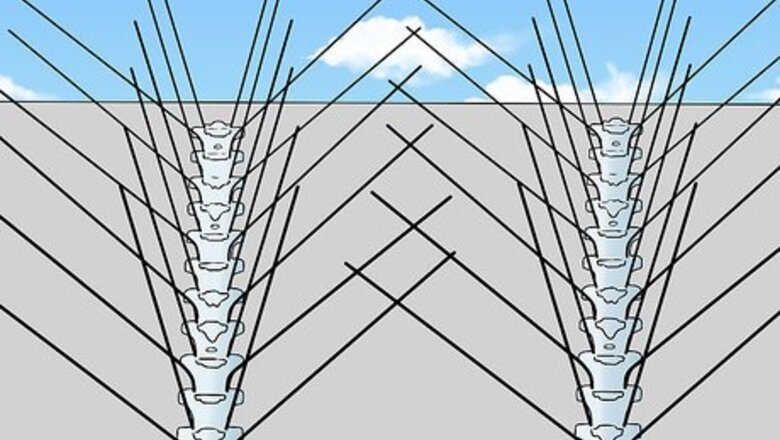
views
Deterring Pigeons Instead of Catching Them
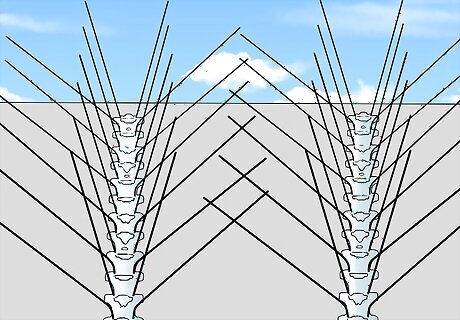
Install pigeon spikes in places where pigeons are likely to roost. Imagine something similar to a bed of nails, but with the nails tilted in different directions - this is a pigeon spike. Since it’s not a flat, comfortable surface, pigeons will tend to avoid areas where these spikes are installed. They are best installed in areas where pigeons would attempt to congregate for nesting or sleeping. In addition to the spikes (which come in metal and plastic) there are also pigeon coils, which are coiled pieces of wire (like a slinky) that can be stretched out to allow for different sized spaces between each loop.
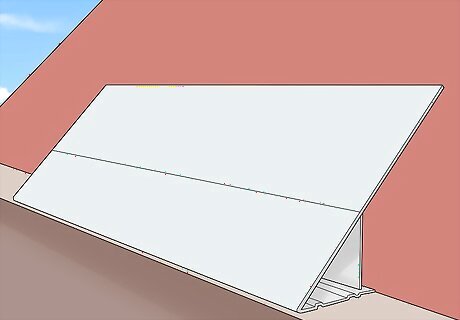
Install a bird slope. Bird slopes are slippery, sloped surfaces you install on your roof that a pigeon, or any bird for that matter, can’t grip with their feet. Instead, they slip and slide until they “fall off” (i.e. fly away). Bird slopes are nice in that they can be made to blend in with your roof and won’t look as obvious as bird spikes.
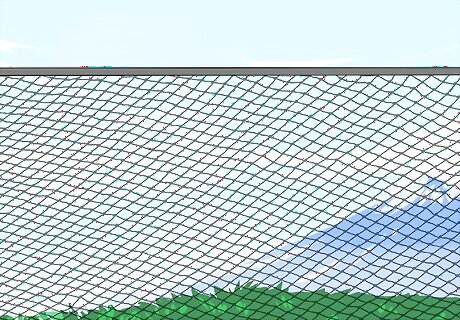
Install bird netting. Bird nets are nets to deter birds, not catch them. Nylon netting is used for large surface areas like tall buildings or fields of crops. Because the nylon is quite thin, it can be made to look almost invisible on a tall building. Depending on what type of structure it’s covering, you may want to check that the netting is fire and water proof. Bird nets are designed for large spaces and are therefore better suited for commercial or agricultural use, rather than residential. Pigeons can also be prevented from entering certain locations using wire mesh instead of nylon netting. It is heavier but also comes in different sizes depending on your needs.
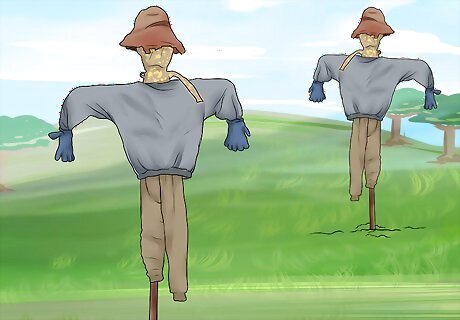
Put up a scarecrow. This “scarecrow” doesn’t have to look like the traditional ones you remember from movies like The Wizard of Oz, but simply needs to take the shape and size of a human. (Another term used somethings is “human effigy”.) They work just like you’d expect, but more modern versions can be made of inflatable material that blows around, creating movement that helps scare the pigeons away.
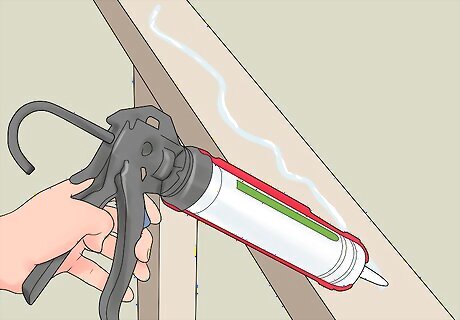
Use repellent gel. Repellent gel is sticky and when a pigeon lands on/in it, it’s uncomfortable and they fly away. You can also use crushed dried chili peppers instead of gel to get a similar result. Keep in mind, however, that this method, especially the chili peppers, washes away and has to be reapplied. This is more of a short-term, temporary option if you need a quick fix. Note that some repellent gels (and liquids) are not legal in some countries. Make sure your check your country’s laws before using these types of products.
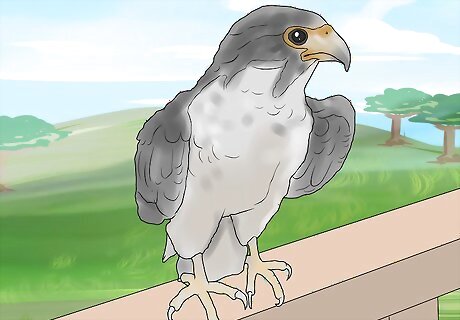
Display a pigeon predator. A pigeon predator can take the form of a statue, robot or even the real thing. The best predators for pigeons are peregrine falcons and owls. Some fake predators can be automated to move and make sounds to scare pigeons away. Others are just plastic or wood decoys molded and painted to look like an owl or peregrine falcon, although some are designed to have moveable parts driven by the wind, so no power or batteries are required. Robotic fake predators can be costly and are designed more for commercial than residential use. As with other “bird” deterrents, the fake predator may also scare away all other birds, including the ones you may want to keep around.
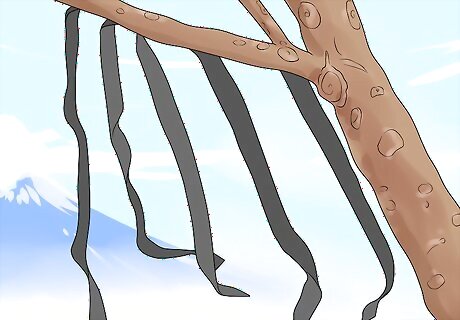
Put up flash tape, scare balloons or flashing eyes. Scare balloons are designed to be bright, reflective, and scary to a pigeon. They aren’t filled with helium to float, but rather are hung from trees, balconies, decks, etc. Flashing eyes are large flat boards with eyes painted on both sides. The eyes are mounted on a stake that’s put in the ground, and mirrors are placed to reflect up into the eyes as they spin. The combination of eyes, movement and reflective material help scare pigeons away from the area. Flash tape essentially looks like large pieces of tinsel, with an iridescent surface that is sometimes made to look like eyes (like the flashing eyes). It comes in rolls (like tape) and can be cut to various lengths and hung anywhere to blow in the wind. Note that all these devices are not bird-specific and will work on any bird that is not a predator. Therefore these items might also scare away birds you want to attract like swallows, hummingbirds and chickadees.
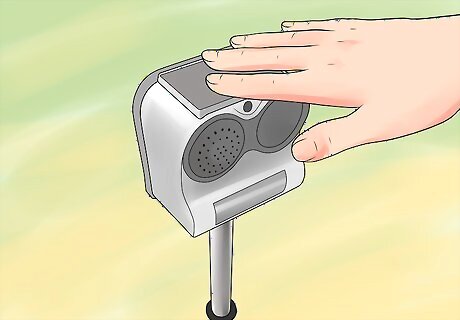
Install a motion detector. When a pigeon’s movements are detected by the motion detector, a sound, sometimes at an ultrasonic frequency, is played. This sound is annoying to the pigeon and they won’t stick around. If the motion detector plays ultrasonic sounds, humans won’t be able to hear them, so it won’t be annoying to you. Note that motion detectors need a certain amount of clear space in front of them, and must be set up at certain heights and intervals to be effective. Motion detectors can also be designed to spray water (from an attached hose) rather than play a sound. As with other “bird” deterrents, the motion detector may also scare away all other birds, including the ones you may want to keep around. Ultrasonic devices should NOT be used in an area also occupied by bats.
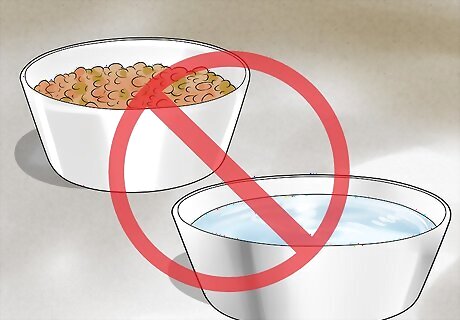
Remove all food and water sources. Pigeons are hanging out on your property because they’ve found food and/or water they can easily access. If you remove that food and water, your property won’t look as appealing to the pigeons and they may relocate. This is obviously more difficult to do if you’re in a highly populated urban area where your property is surrounded by the property of others at a close proximity. The food and water might actually be located on someone else’s property, but yours is close enough for them to fly to for resting and nesting. In this case you may want to consider bringing up the problem with your landlord, condo association, community league or city council.
Getting a Domesticated Pigeon Home
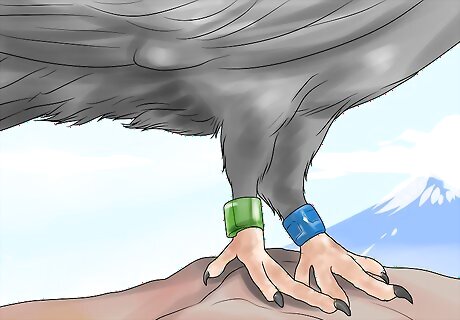
Determine if the pigeon is domesticated or wild. This is rather easily done by looking at the pigeon’s legs. Pigeons raised in captivity and sold for racing and show purposes will have a metal band around one of their legs. This metal band will have information on it, and you’ll need to catch the pigeon in order to read this info.
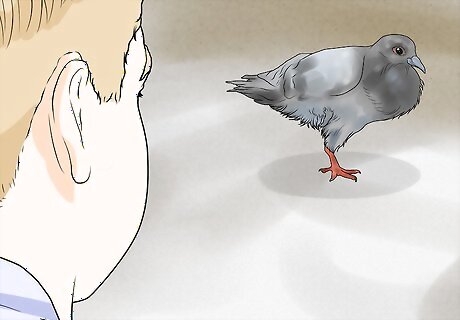
Look for signs of injury or weakness. Sometimes racing pigeons are just taking a break, and simply need to rest awhile before moving on. If the pigeon looks like it’s injured, or too weak to protect itself, you will need to catch it to take care of it. Under the circumstances the pigeon shouldn’t put up much of a fight and should be pretty easy to pick up. Place the pigeon in a basket, cage, large box or pet carrier. If the pigeon is injured, but is also trying to get away, you can try getting close enough to throw a blanket or towel over the pigeon while it’s on the ground, then pick up the towel or blanket and carefully remove the pigeon. Make sure the box, basket, carrier or cage is lined with a towel, blanket or paper towels. If the pigeon is injured it will need to be kept warm until you can get it help.
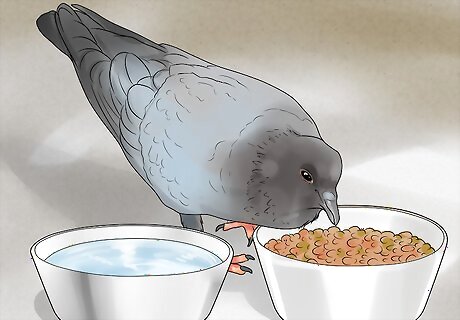
Feed and water the pigeon. If the pigeon looks healthy you can leave it where it is, but you may want to consider putting out a bowl of water and some food (wheat, corn, small grains or fine seeds) for it to snack on while it takes a break. If the pigeon is injured or weak, provide it the same type of food and a bowl of water inside the basket, cage, carrier or box. If the pigeon is too weak to stand, or is having trouble with balance, do not give it water right away. The water bowl would be more a hazard than a help at this point.
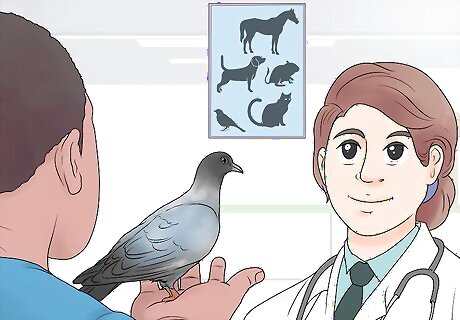
Take the pigeon to a veterinarian. If the pigeon is gasping, has tremors or seizures, is bleeding or throwing up, you must take the pigeon to a vet right away. The vet’s office will be able to help you determine what to do with the bird after, including helping you read the tag and contacting the owner.
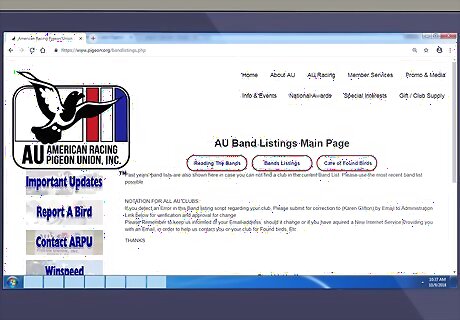
Locate the owner’s contact information. If the pigeon is a racing pigeon, it most likely has a leg band from the American Racing Pigeon Union (ARPU). If this is the case, the number on the leg band will start with the letters “AU”. The next two numbers represent the year the pigeon was hatched and banded. The next three letters represent the specific pigeon club to which the owner belongs. And the final four numbers is the pigeon’s personal identification number with their club. Using the information found on the leg band, you can use the [1] on their website to find the owner’s contact information. If the number on the leg band starts with a “CU” the bird is registered with the Canadian Racing Pigeon Union (CRPU). You can use the lost bird form on their website to list your contact information and information about the pigeon and the CRPU will assist you in locating it’s owner. If the number on the leg band starts with “IF” the bird is registered through the International Federation - American Homing Pigeon Fanciers Inc. You can use their IF Band Listing PDF documents to look up the owner’s contact information. If the number on the leg band starts with “NPA” the bird is registered with the National Pigeon Association. Send an email to [email protected] to let them know you’ve found the pigeon and they’ll assist you with contacting the owner. If the number on the leg band starts with “IPB” send an email to [email protected] or call 1-877-355-7727 to report the pigeon you found. If the number on the leg band starts with “ADA” the pigeon is registered with the American Dove Association (ADA). Send an email to [email protected] to inform them of the pigeon you found and they’ll help you with contacting the owner. If the number on the leg band starts with “NBRC” it is registered with the National Birmingham Roller Club. You can use the online form on their website to send them all the relevant information and they’ll help you locate the owner.
Removing and Relocating Pigeons
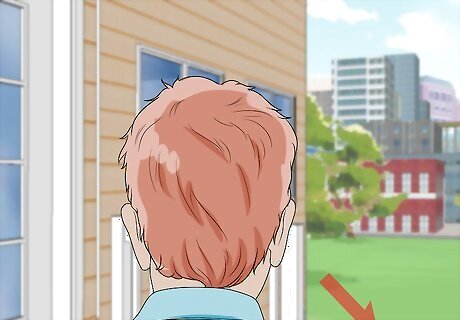
Pick a location where you’d like to eventually place the trap. This location needs to be easily accessible to both you and the pigeons. You will have to go to this location daily to put out pigeon feed, plus you’ll have to go back to check the trap on a regular basis. Once the pigeons are caught, you’ll then need to move the trap from this location to another location, so you’ll need to be able to access it while holding and carrying a bulky, and possibly heavy, trap.
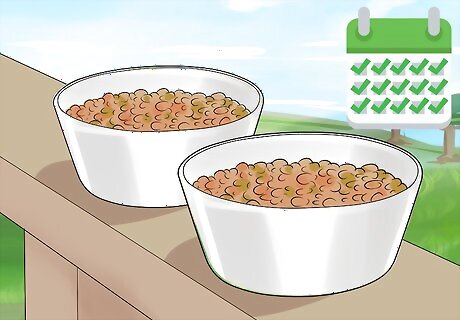
Start placing pigeon feed in the trap area on a daily basis. You may have to do this everyday, maybe multiple times a day, for up to a week before laying out the trap. The key is to try to attract as many of the pesky pigeons as possible to the area so they’ll be around when you put out the trap.
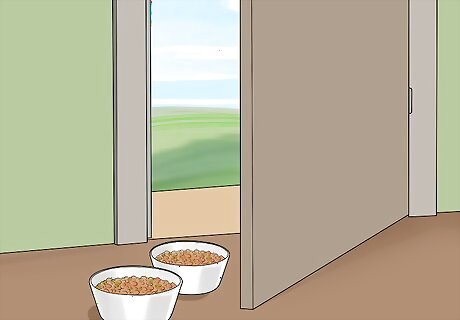
Put out the trap with food inside. After a week or so of baiting the pigeons, it’s time to try to catch them. Read the instructions for your specific trap to make sure you understand how to operate the trap door, and set it up. Place a bunch of pigeon feed inside the trap, and immediately outside the trap door.
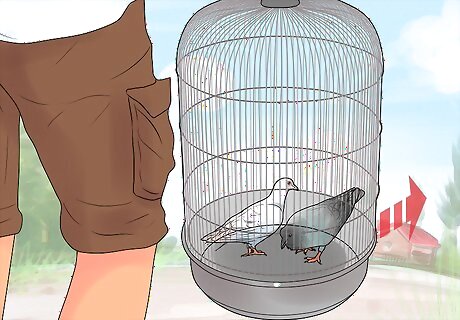
Relocate the pigeons away from your property. Hopefully you were able to capture several of the pigeons from your property in the cage without much trouble. Now you’ll need to take the cage somewhere to release them. Ideally this should be an area away from private property as other property owners may not appreciate being stuck with your pesky pigeons. Keep in mind that many pigeons have an innate homing ability which allows them to find their “home”, i.e. the place where they find food, from miles, possibly even hundreds of miles, away. If the pigeons on your property were there for some time, and found regular food, they might actually come back to you! You should prepare for this by implementing pigeon deterrents while they’re gone in anticipation of their return. If, by luck, they do not come back, the pigeon deterrents will help keep other pigeons from stumbling onto your property and setting up house.
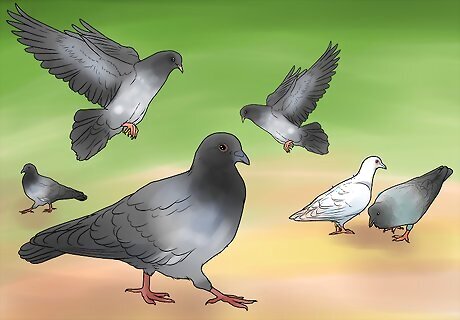
Leave the pigeons alone. Rather than catching the pesky pigeons, you could just leave them alone. They’re just trying to survive like the rest of us. If they’re on your property, they’ve found a place that makes them feel safe and provides them with food and shelter. They aren’t harmful, and contrary to popular opinion, you’re not going to get any nasty diseases from having them around.
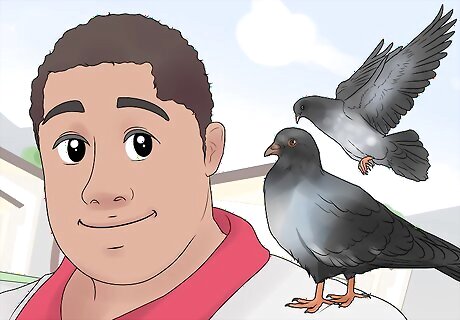
Keep the pigeons as pets. Pigeons, while messy in large, unruly groups, are actually quite nice pets when you have a manageable number and the proper pigeon loft for them to live. You can even train them to return to their loft from far away and enter them in pigeon races. Check out the American Pigeon Racing Union (APRU) to get an idea of the fun you could have with pigeons.

Hire a pest control specialist. Pest control companies handle the removal and elimination of pests of all sorts, including pigeons. If your pigeon problem is severe, or you’ve tried other methods that haven’t worked, it may be time to call in a professional. Different pest control companies will “handle” pigeons differently. Make sure you tell them you’re looking for a humane solution if you do not want the birds to be killed.












Comments
0 comment